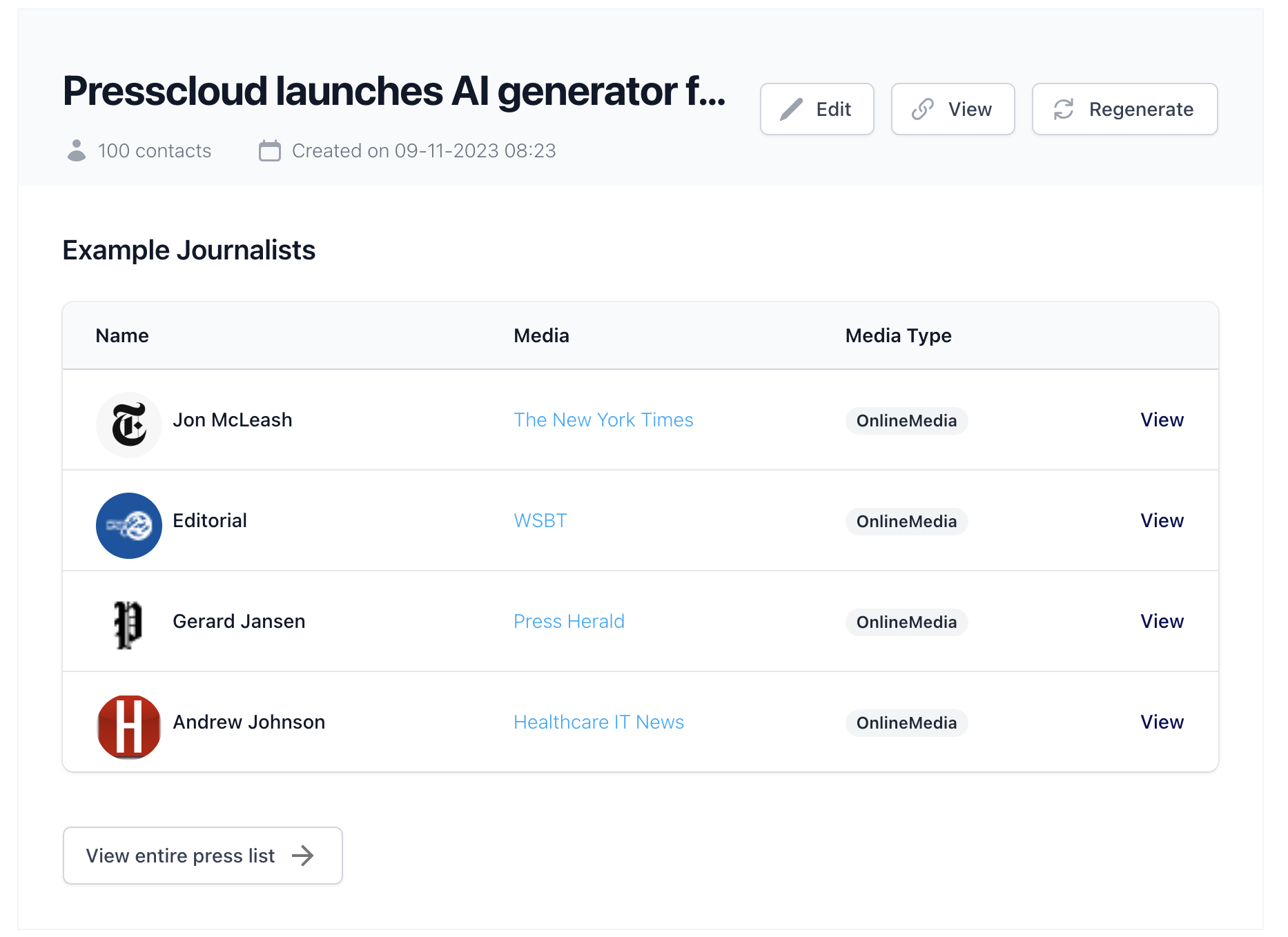Are you looking for content that is relevant to a business trade journal? Consider conducting research within a specific target group. This creates newsworthiness for trade journals.
Targeting Niches
Conducting research within a specific target group is more challenging than researching a representative group of a thousand Dutch people. It is harder (and therefore more expensive) to survey only IT professionals or young mothers, for example. However, research within a niche market brings the advantage of generating specific knowledge. This makes it extremely suitable content for trade journals.
Moreover, media apply different criteria for research among such a specific target group. Research into the opinion of 'the Dutch person' requires a sample size of at least a thousand Dutch people. For a smaller target group, 100 respondents or a multiple thereof may suffice.
Below, you will find several surveys conducted within such specific target groups, which will hopefully inspire you to get started too.
1: Research into the desires of a group of professionals
IT professionals are in demand, but it is not reflected in their wallets.
IT professionals are sought after in the job market, but they don't seem to reap the benefits. Over the past twelve months, salaries for IT professionals have increased by only 1.3 percent, according to research. After inflation adjustment, their purchasing power remains at 0.
The survey was conducted among 2600 IT professionals by consultancy firm Berenschot and AG Connect, in collaboration with the professional association for information and IT professionals KNVI. "I had assumed a different picture would have emerged, especially the fact that the increase in all collectively agreed wages combined is higher than that of IT, namely 1.5 percent, is surprising," says Hans van der Spek, who is responsible for the study at Berenschot.
As reported in theAlgemeen Dagblad.
2: Research on the labor market
'Image problem in the financial sector does not help to fill vacancies'
Eight out of ten HR professionals in the financial sector state that the sector has an image problem. A whopping 65 percent indicate that they have difficulty filling vacancies, according to research done by FBD Bankmensen among more than a hundred HR professionals in the financial sector.
"We notice that there is a lot of dissatisfaction in society about the way the sector is organized," says Henk Kelder, director of FBD Bankmensen. "We already hear that people prefer not to say that they work at a bank. HR departments are the antenna and the calling card of companies. So it is significant that they are sending this signal." The image problem of the financial sector ensures that almost all surveyed HR professionals say that they are looking for an employee who contributes to a positive image of the company.
OnCMweb.nl
3: Research on the desires of IT decision-makers
British and German IT decision-makers are increasingly considering hyper-converged infrastructure (HCI)
British and German IT decision-makers are more often considering hyper-converged infrastructure (HCI). This is evident from research conducted with a hundred IT decision-makers by Censuswide on behalf of the American company Pivot3, which provides HCI solutions.
According to the research, HCI reduces complexity around infrastructure, data centers, and growing data storage (including mobile use) & security. Many IT decision-makers want to save costs and have an infrastructure with fewer different components.
Featured onDutch IT-Channel
4: Research into the behavior of smart 60-plus individuals
Gifted seniors do not like bingo
Research among a hundred highly intelligent seniors shows that the majority feel lonely and more than 80 percent would like to continue to develop. In the Utrecht-based care center, they try to find out during the intake conversation with a future resident whether they need more than just bingo.
"We ask not only about their past but also what they would like to learn during their time with us. In addition, there is a lecture every two weeks in our science café. Every student who signs up gives four lectures," says department manager Chantal Brons (42).
As mentioned inTrouw.
How to set up research among a specific target group?
You can opt to hire a research agency. That is expensive. If you're using this software, there's a good chance you'd prefer to try something yourself before outsourcing. The following steps help you to set up and conduct research on your own:
1: Brainstorm
Determine which topics are or might become relevant in your sector. Is it about a shortage of suitable workers? Is there new legislation coming with a far-reaching impact? Are there prejudices that need to be disproved? Is there a topic that is very current at the moment? Make a list of two to five such topics so you can formulate statements about them.
2: Create statements
It is tempting to have respondents react to open questions. However, this has several drawbacks. First, it takes them much more time to complete the survey, which decreases the number of respondents. Secondly, open questions produce less newsworthy insights. Responses to open questions make it more difficult to write an exciting press release.
Therefore, always aim for statements that can be answered by agreeing or disagreeing. Think about:
- It is becoming increasingly difficult to score financing from the bank
- I value a high salary more than nice colleagues
- The government should make it easier to bring talent from abroad to the Netherlands
- I only want to work at a company where, after a period of time, I can acquire shares
3: Set up an online survey
There are several options for conducting a survey. Typeform is a well-known platform that lets you easily design a study. Also, Google Forms is a suitable alternative. An online survey enables easier distribution.
4: Ensure distribution
Firstly, it is important to explain why someone would want to participate in the survey. There are various options:
- Reward someone with a prize (raffle ten iPads among respondents)
- Ensure there is something in it for them, such as an enlightening insight. Share, for example, a report containing a number of insights. Below is an example of this;
[Box: An example of research with a clear reward]
Are you curious to know what type of HR professional you are? Then take three to five minutes to answer these questions and gain insight into how you respond to changes in the labor market.
After completion, respondents received an email with a description of their characteristics (hesitant, assertive, etc.), the associated pitfalls, and a number of tips on how they could better respond to changes.]
Then spread the survey among the target group. This distribution can be done through the following channels:
- Email to all customers, prospects, and other contacts;
- Message on the company's social media channels and all employees;
- A LinkedIn ad promoting the survey;
- Consider, if the above steps do not yield results, calling the target group and presenting the statements by phone.
5: Conquer the world with this content
That goes without saying ;-)
But seriously: this is excellent content for writing press releases. You can read more about this in the article.

